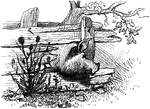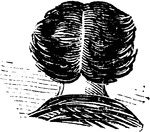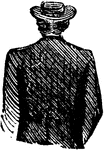
Leadbeater's Cockatoo Sitting on a Tree Branch
"Cacatuo leadbeateri, Leadbeater's Cockatoo, has a red crest banded with yellow and tipped with white,…

Kirombo
"Leptosoma discolor, the Kiromobo or Vorondreo of Madagascar, and the Comoro Islands, which has a big…

Motmot
"Momotus brasiliensis, the Motmot, from Guiana to Northern Brazil, is somewhat similar in colour (to…
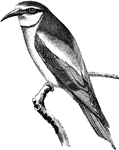
Bee Eater
"Merops Apiaster, the Bee-eater, has ruddy-brown head, neck, upper back, and broad alar bar, buff lower…

Hoopoe
"Upupa epops, not unfrequently visits Britain, where it has nested on several occasions; it breeds from…

Long Tailed Hummingbird
"Aithurus polytmus, the Long-tailed Hummingbird, peculiar to Jamaica, the two tail-feathers next to…
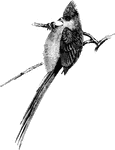
Cape Coly
"Colius capensis, or Cape Coly, has two stripes of black on the back enclosing one of white, the bare…

Plait-billed Hornbill
The Rytidoceros undulatus, Plait-billed Hornbill, or Wreathed Hornbill, has black wings, belly, and…

Lesser Spotted Woodpecker
"Dendrocopus minor, or Lesser Spotted Woodpecker, are the British representatives, The colours in this…

Poetic Rebus
"I long to lay this aching head and wounded heart beneath the soil, To slumber in that dreamless bed…

The Great Black Woodpecker
"Picus martius, the Black Woodpecker, an inhabitant of the pine-forests of Europe and Asia to Japan,…
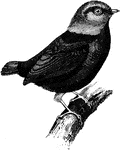
Red-capped Manakin
Pipra mentalis, the Red-capped Manakin, has black plumage with a red head, neck, and thighs.
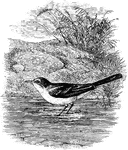
Yellow Wagtail
"Motacilla raii, the Yellow Wagtails, are generally black and white, grey and white, grey with a yellow…

Paradise Flycatcher
"Terpsiphone paradisi, Paradise Flycatchers, have fine crests, shorter in the female; while fleshy wattles,…
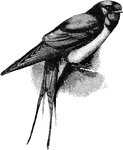
Swallow
"Hirundo rustica, the Swallow, is metallic black, with a variable amount of chestnut or rufous on the…
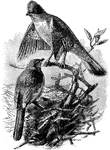
Two Grey "Coly-Shrike" Birds Sitting on Tree Branches
"Hypocolius ampelinus, Grey "Coly-Shrike", the plumage is soft, with characteristically stiff shafts…
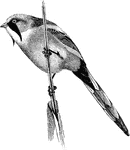
Reed Pheasant
"Panurus biarmicus, the "Bearded Tit" or "Reed-Pheasant" plumage is orange-brown above, with grey crown…
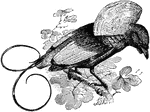
Magnificent Bird of Paradise
"Diphyllodes magnifica, Magnificent Bird of Paradise, has a brown head and under surface, green throat…

Black and White Warbler
"Mniotilta varia, the Black and White Warbler, The general coloration is olive-green, grey, or slaty-blue,…
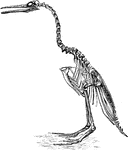
The Restoration of the Hesperornis Regalis
"Hesperornis regalis, (a fossilized restoration) which stood about three feet high, had blunt teeth…

Skeleton Head of a Ichthyornis
"Ichthyornis victor and I. dispar, ...were small forms of about the size of a Partridge, with the habits…
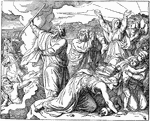
Pharaoh's Host Destroyed
"And Moses stretched out his hand over the sea; and Jehovah caused the sea to go back by a strong east…
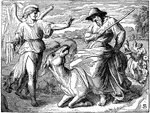
Balaam Met by the Angel of the Lord
"Then the LORD opened the eyes of Balaam, and he saw the angel of the LORD standing in the way, and…

Non-Vocal Primary Back Consonant
Consonants have a closed or narrowly expanded adjustment of the vocal organs, so that in their production…
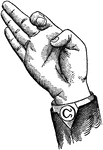
Non-Vocal Mixed Back Consonant
Consonants have a closed or narrowly expanded adjustment of the vocal organs, so that in their production…
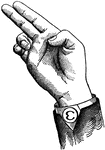
Non-Vocal Divided Back Consonant
Consonants have a closed or narrowly expanded adjustment of the vocal organs, so that in their production…

Non-Vocal Mixed-Divided Back Consonant
Consonants have a closed or narrowly expanded adjustment of the vocal organs, so that in their production…
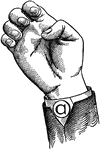
Non-Vocal Shut Back Consonant
Consonants have a closed or narrowly expanded adjustment of the vocal organs, so that in their production…
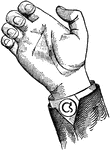
Non-Vocal Nasal Back Consonant
Consonants have a closed or narrowly expanded adjustment of the vocal organs, so that in their production…

Vocalized Primary Back Consonant
Consonants have a closed or narrowly expanded adjustment of the vocal organs, so that in their production…
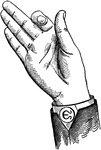
Vocalized Mixed Back Consonant
Consonants have a closed or narrowly expanded adjustment of the vocal organs, so that in their production…
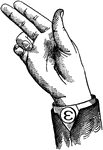
Vocalized Divided Back Consonant
Consonants have a closed or narrowly expanded adjustment of the vocal organs, so that in their production…

Vocalized Mixed-Divided Back Consonant
Consonants have a closed or narrowly expanded adjustment of the vocal organs, so that in their production…

Vocalized Shut Back Consonant
Consonants have a closed or narrowly expanded adjustment of the vocal organs, so that in their production…
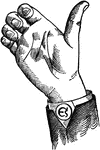
Vocalized Nasal Back Consonant
Consonants have a closed or narrowly expanded adjustment of the vocal organs, so that in their production…

Non-Vocal Primary Throat Consonant
Consonants have a closed or narrowly expanded adjustment of the vocal organs, so that in their production…

Non-Vocal Primary Throat Consonant
Consonants have a closed or narrowly expanded adjustment of the vocal organs, so that in their production…

Non-Vocal Shut Throat Consonant
Consonants have a closed or narrowly expanded adjustment of the vocal organs, so that in their production…

Vocalized Primary Throat Consonant
Consonants have a closed or narrowly expanded adjustment of the vocal organs, so that in their production…
![Glides are only transitional sounds. They are intermediate to Consonants and Vowels, combining the characteristics of certain central-aperture consonants with the wide or expanded quality of vowels, but differing from vowels in not having a fixed configuration. ...in representing glides the peculiarities of consonants and vowels are blended: the accented fingers, by being straightened, contribute a consonant characteristic; while the second phalanx of the thumb, by being held at an angle to the plane of the palm, imparts to the glide positions the wide, without giving them the firm, quality of vowel positions. <p> Breath-Glide - A transitional aspiration, of organic quality corresponding to that of the adjoining elements [a soft effect of the Consonants, back primary; top primary; Point primary; Lip primary; etc.]. Although this glide has no fixed abiding place, and is of a somewhat variable organic formation, in its effect it is very closely allied to the Throat consonant aspirate, and is therefore represented with a posterior position of the palm and a separation of the index and center fingers, which are characteristic features of Throat positions. This is the only Non-Vocal glide, and hence is the only one in the representation of which the voice phalanx is unaccented.](https://etc.usf.edu/clipart/65900/65914/65914_glide_breath_mth.gif)
Breath-Glide
Glides are only transitional sounds. They are intermediate to Consonants and Vowels, combining the characteristics…

Back-Glide
Glides are only transitional sounds. They are intermediate to Consonants and Vowels, combining the characteristics…

Back Mixed-Glide
Glides are only transitional sounds. They are intermediate to Consonants and Vowels, combining the characteristics…
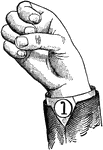
Normal Aperture Back Primary High Vowel
Vowels have a wide, firm, and free channel, whereby the breath is modified without friction or sibilation.…

Normal Aperture Back Primary Mid Vowel
Vowels have a wide, firm, and free channel, whereby the breath is modified without friction or sibilation.…

Normal Aperture Back Primary Low Vowel
Vowels have a wide, firm, and free channel, whereby the breath is modified without friction or sibilation.…

Normal Aperture Back Wide High Vowel
Vowels have a wide, firm, and free channel, whereby the breath is modified without friction or sibilation.…

Normal Aperture Back Wide Mid Vowel
Vowels have a wide, firm, and free channel, whereby the breath is modified without friction or sibilation.…

Normal Aperture Back Wide Low Vowel
Vowels have a wide, firm, and free channel, whereby the breath is modified without friction or sibilation.…
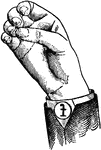
Round Back Primary High Vowel
Vowels have a wide, firm, and free channel, whereby the breath is modified without friction or sibilation.…

Round Back Primary Mid Vowel
Vowels have a wide, firm, and free channel, whereby the breath is modified without friction or sibilation.…

Round Back Primary Low Vowel
Vowels have a wide, firm, and free channel, whereby the breath is modified without friction or sibilation.…

Round Back Wide High Vowel
Vowels have a wide, firm, and free channel, whereby the breath is modified without friction or sibilation.…

Round Back Wide Mid Vowel
Vowels have a wide, firm, and free channel, whereby the breath is modified without friction or sibilation.…

Round Back Wide Low Vowel
Vowels have a wide, firm, and free channel, whereby the breath is modified without friction or sibilation.…

